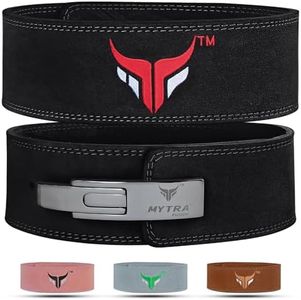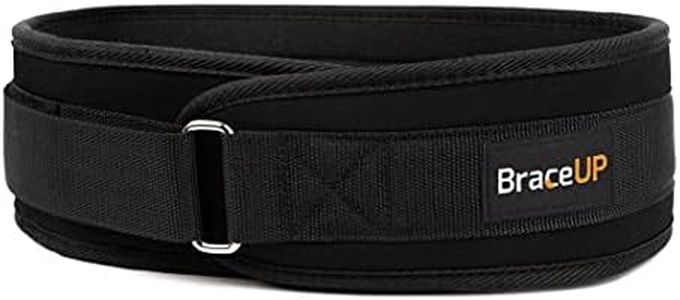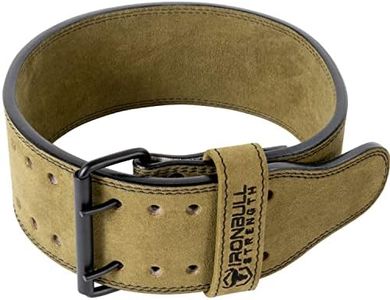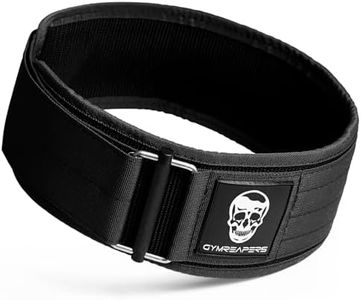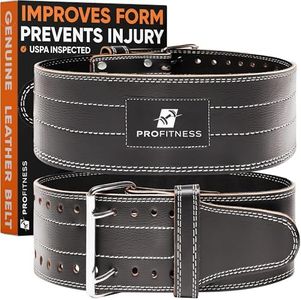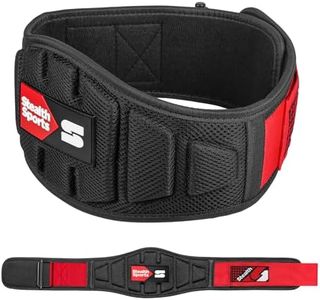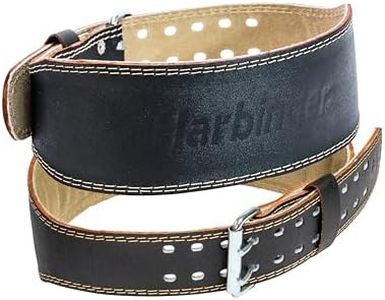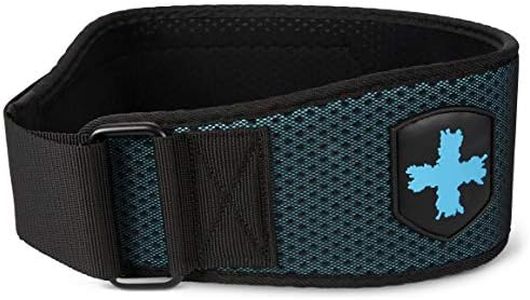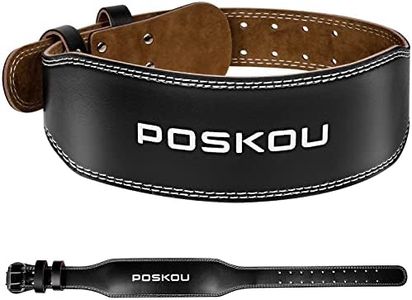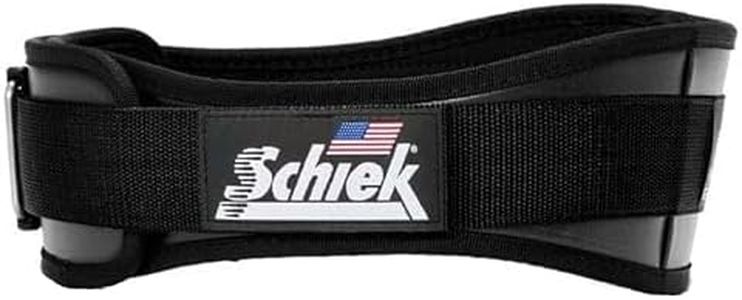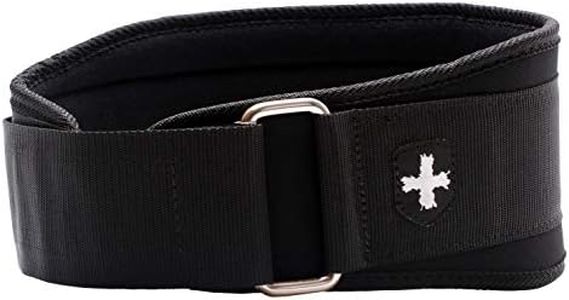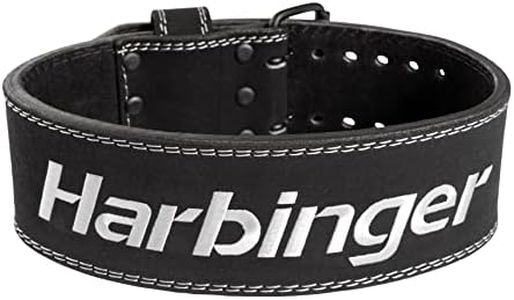We Use CookiesWe use cookies to enhance the security, performance,
functionality and for analytical and promotional activities. By continuing to browse this site you
are agreeing to our privacy policy
10 Best Lifting Belts
From leading brands and best sellers available on the web.By clicking on a link to a third party's website, log data is shared with that third party.
Buying Guide for the Best Lifting Belts
Picking the right lifting belt is important if you're aiming to improve your lifting performance and protect your back during heavy lifts. The right belt can help provide core stability, reduce the risk of injury, and offer confidence for everything from powerlifting to general gym sessions. When making your choice, you should consider your individual goals, the types of lifts you do most, and your comfort preferences. Below, you'll find explanations of key specifications to help guide your choice.Belt WidthThe width of a lifting belt refers to how tall the belt is from top to bottom, usually measured at the back. Wider belts (typically around 4 inches) give more support to the lower back, making them great for powerlifting or heavy compound lifts like squats and deadlifts. Narrower belts, often under 4 inches, can be more comfortable and less restrictive, which might be better for Olympic lifting or general fitness. If your workouts focus on very heavy lifts and you need maximum support, go wider; if you want more movement and do a variety of exercises, pick a narrower belt.
ThicknessThe thickness of a lifting belt is usually measured in millimeters, with common options ranging from about 6mm to 13mm. Thicker belts provide firmer support and don’t compress as much under pressure, which serious lifters often prefer for maximum stability. Thinner belts are lighter, more flexible, and more comfortable, making them a good fit for beginners or for people doing dynamic movements. Choose a thicker belt if your priority is heavy, static lifts and the absolute best support, but if comfort and flexibility are more important, go for a thinner option.
MaterialLifting belts are typically made from leather or synthetic materials like nylon. Leather belts are very durable and offer the stiffest support, ideal for handling heavy weight. Synthetic (often nylon) belts are softer, lighter, and offer more flexibility, which can feel better during high-movement exercises or when switching between different types of lifts. Consider a leather belt if strength and longevity are your top needs, or a nylon belt for comfort and versatility.
Closure TypeThe closure type refers to how you fasten the belt: common types are prong, lever, and Velcro. Prong closures (single or double) are reliable and allow fine-tuned adjustments but can take longer to put on and take off. Lever closures offer quick on/off and consistent tightness but require fixed adjustments with a screwdriver to change the size. Velcro closures are the quickest and easiest to use, but generally offer less support compared to leather belts. For maximum and adjustable support, choose prong or lever; if ease of use and speed are crucial for your training, Velcro might suit you better.
Contour or TaperingSome lifting belts have a uniform width all the way around, while others are contoured or tapered—narrower in the front than in the back. A uniform width offers consistent support and is popular with powerlifters. Tapered belts provide more comfort in the front, allowing for easier bending and movement, so they’re often chosen by Olympic lifters or anyone needing more flexibility during their routines. If your workouts focus on maximum back support during static lifts, go for a uniform width; otherwise, a tapered belt can be better for all-around gym use.
Size and FitThe right size ensures your belt fits snugly around your core without being too loose or overly tight. Sizing is typically based on the measurement around your midsection where the belt will sit, not your regular pant size. A good fit should allow you to tighten the belt enough to feel strong support while still being able to breathe and brace your core. Always measure your waist as instructed by the belt manufacturer and double-check that the belt size range covers your waist measurement, ensuring you get both effectiveness and comfort.


